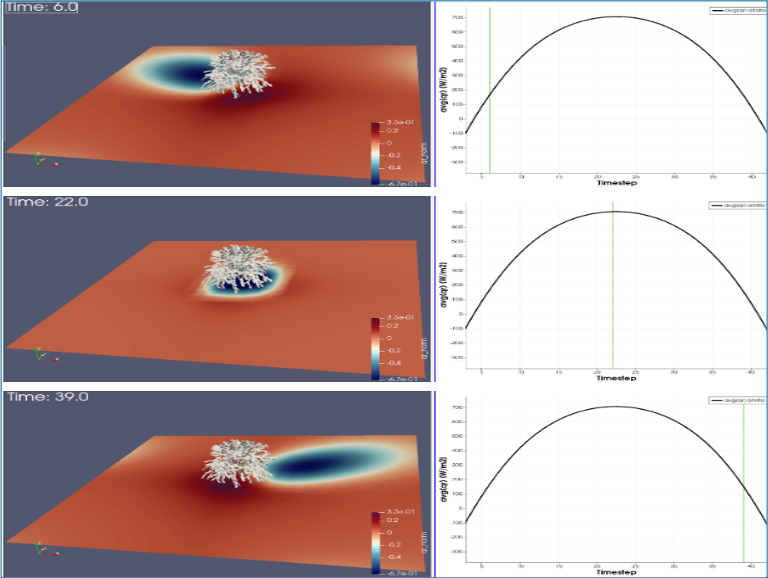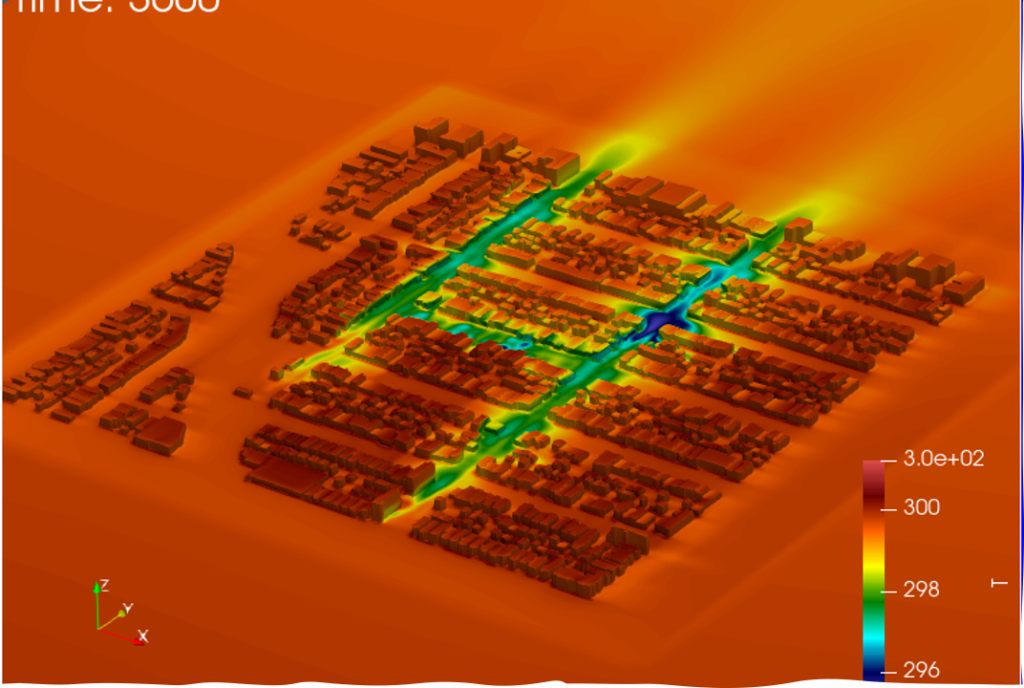We use measurements and observations collected from around the Chicago area to create detailed models. These models help scientists understand and share information about the regional, city, and street-level impacts of climate change.
Some of our recent models are below.

A
Modeling vegetation in urban streets
We are studying the ways that vegetation like trees, plants and green spaces impact the microclimate in Chicago neighborhoods.
A: This model shows the estimation of surface radiative flux under solar radiation accounting for canopy shading. The right pane is the time evolution of the radiative flux averaged over the model domain including the tree, green line marks the time corresponding to the shading shown on the left.
B and C: These models show a simulation over the Humbolt Park with southerly wind using a RANS model developed from OpenFOAM. Trees are included for test in the three streets (two N-S and one E-W). Simulation results after 1 hour simulation time, 3D view of the temperature (B) and water vapor (C) mixing ratio distribution at the surface
(Wang and Fernando, manuscript in prep).

B

C
Evaluating the impact of cool roofs, green roofs, and solar panel roofs
We are studying the ways that different types of roof surfaces impact the microclimates around them.
D: These models show the near-surface temperature and cooling energy demand through regional modeling in the Chicago metropolitan area. We show that all three strategies can reduce surface temperature, with cool roofs having the biggest effect. Energy consumption by the buildings is reduced by most when solar roofs are used (Tan et al., 2022).

D



